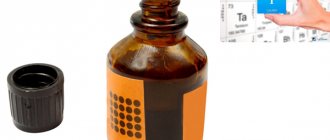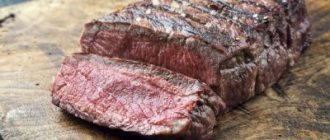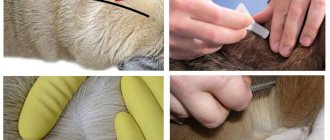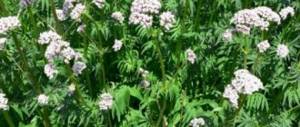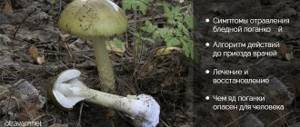Fly agaric poisoning is common in clinical practice. The number of cases of unfavorable outcomes is steadily increasing, despite the fact that even children know what this mushroom looks like and how poisonous it is. Accidental consumption of these mushrooms with bright red caps is rare.
Poisoning often occurs as a result of taking fly agaric based products made by traditional healers, as well as when trying to use this mushroom as a drug, because when specially prepared, the toxin contained in the pulp can cause a state of euphoria and hallucinations.
What does a fly agaric look like?
Let's divide the fly agaric into two subspecies
Few people know that the fly agaric is a whole family that includes more than five hundred individual species. Many of these species are poisonous, some even deadly! But there are also conditionally edible species and even some mushrooms of the highest degree of edibility.
Poisonous fly agarics are often the counterpart of an edible mushroom in one of the four categories of edibility. Now I will list the most common poisonous fly agaric mushrooms found in our forests:
Types of fly agarics
- Pearl fly agaric (bright yellow) is a deadly poisonous mushroom
Amanita gemmata
- Red fly agaric
Amanita muscaria
- Royal fly agaric
Amanita regalis
- Stinking mushroom (white toadstool, white stinking, pale toadstool). Deadly poisonous
Amanita phalloides
- White fly agaric (spring toadstool)
Amanita virosa
Species of the family that can be safely eaten
Gray-pink fly agaric
- Gray – pink (maremukha)
Amanita rubescens
- Lone fly agaric (bristly)
Amanita echinocephala
- Egg-shaped fly agaric
Amanita ovoidea
- Mushroom Caesar (Imperial Fly Agaric)
Amanita caesarea
- Far Eastern Caesar mushroom (Caesar mushroom, Caesar mushroom)
Amanita caesareoides
Therefore, to clearly answer your question: “what will happen if you eat a raw fly agaric and can you die?” I can't give you a firm answer. It all depends on what kind you managed to eat and whether it contains poison.
Signs of poisoning
Symptoms of fly agaric poisoning can develop in the form of two syndromes: muscarinic and atropine. The course of the disease depends on the amount of toxin consumed. Mortality in both cases reaches 2%.
Muscarinic syndrome usually develops in combination with gastrointestinal syndrome and includes the following symptoms:
- hyperhidrosis;
- hypersalivation;
- bronchorrhea;
- miosis;
- vomit;
- nausea;
- stomach ache;
- diarrhea.
The first symptoms of poisoning appear 30-40 minutes after eating fly agaric. The clinical picture reaches its peak after 4-8 hours. In severe cases, the patient develops respiratory failure, pulmonary edema, cardiac arrest against the background of intractable vascular collapse.
Atropine syndrome usually develops 1.5-2 hours after eating fly agaric. Patients experience signs of mental disorder:
- hallucinations;
- rave;
- convulsions;
- epileptic seizures;
- mental and somatic arousal;
- panic attacks;
- loss of consciousness.
Similar symptoms often occur in people who consume mushrooms to achieve a hallucinogenic effect. A striking example of atropine syndrome are the descriptions of Carlos Castaneda, who used hallucinogenic mushrooms for imaginary trips into the world of dreams.
People under the influence of ibotenic acid can be easily recognized in the photo. They have facial hyperemia, dilated pupils, and slurred facial expressions.
Severity of poisoning with muscarinic syndrome:
Let's talk a little about the history of fly agarics
History of the use of fly agarics
The most famous, the red fly agaric, has been seen in almost all parts of our vast land. Some African tribes grew fly agarics for the preparation of medicines, and its juice and squeeze are still considered among them a drink of the gods and even a sacred elixir!
Psychoactive substances, which the red species contains in large quantities, were discovered by northern shamans. After that, it became a ritual mushroom, which took part in all the dances and dances to tambourines; just eat half the cap of a red mushroom and, without fear of dying or getting poisoned, go into a trance.
Siberian people very often used it to make symptoms similar to the use of narcotic substances and used it as a means for physical and spiritual relaxation of the body. Afterwards, with the advent of alcoholic beverages in this region, interest in its use weakened greatly, due to the fear of death and the possibility of severe poisoning of the body. The effect of consuming a poisonous mushroom potion told the brain to do fearless and very often inappropriately dangerous actions.
First aid
People who regularly pick mushrooms need to know what to do in case of poisoning. If signs of intoxication occur after eating mushrooms, you should immediately call an ambulance or go to a medical facility. Before doctors arrive, it is recommended to perform gastric lavage several times. To do this, dilute 3 tablespoons in 5 liters of warm water. salt. It is necessary to drink as much salted liquid as possible, and then induce vomiting.
It is recommended to do an enema with boiled water. Be sure to take activated carbon or another absorbent. These first aid measures eliminate most of the poison from the human body. This reduces the risk of developing undesirable consequences of poisoning.
After this, the patient must be taken to the hospital. Subsequently, treatment is carried out in a hospital. The patient is immediately given an antidote. The antidote for fly agaric poisoning is Atropine. Vital signs must be monitored. In severe cases, the patient must be connected to a ventilator. Drugs are selected to eliminate the symptoms of poisoning and stabilize the functioning of the nervous and cardiovascular systems.
Are there any beneficial properties in fly agarics?
For what reasons are many people drawn to eat fly agaric?
Collection of fly agaric mushrooms.
Is it worth it? People still learn from their mistakes and have already learned not to eat this dangerous forest inhabitant without objective reasons for this. But our brain is designed in such a way that we want to try this beautiful specimen. But we often still ask the question: “what will happen?” and “is it fatal?”
- Yes, fatal. But death from eating the most famous one, the red fly agaric, rarely occurs. You need a large dose of consumption and a weak body. But just like that, you shouldn’t indulge in consuming this beauty. It contains substances that cause brain cells to die in large numbers and a person gradually loses a clear mind and loses adequacy in his actions.
In rare cases, it happens that a person eats it unknowingly. What to do and what could be the consequences?
One red individual is not able to cause serious harm; a slight change in the state of the body is possible. It’s better to play it safe and rinse your stomach to accurately minimize the toxic effect on the human brain.
Experts do not have a clear opinion on the lethal dose, but various sources claim that ten fly agaric hats can have a detrimental effect. The figure is still under discussion and cannot be given an exact number, but I can say with confidence that even one hat should not be used just like that.
Cooking recipes
It is recommended to eat only edible varieties of fly agaric. This will avoid the serious consequences of poisoning. These mushrooms are well suited for stewing, frying, drying and pickling. In addition, you can prepare mushroom tea from these fly agaric mushrooms.
Fried mushrooms
The easiest way to prepare fly agarics is by frying. First, the mushrooms need to be thoroughly cleaned and washed. After this, the mushrooms should be boiled for 20 minutes. During the cooking process, you can throw in an onion cut into 4 parts. After pre-treatment, even if a poisonous fly agaric has entered the basket, most of the toxic substances from its pulp will be neutralized. By the end of cooking, the caps should be completely discolored. After this, you need to rinse the mushrooms with running water.
Pour a little vegetable oil into the frying pan and throw in the boiled mushrooms. About 10 minutes before readiness you need to add 2-3 tbsp. sour cream, grated carrots and chopped onions. Mushrooms need to be peppered and salted to taste. After the dish is ready, it can be decorated with fresh herbs and served.
Pickling mushrooms
How to pickle correctly?
Mushrooms intended for pickling should be thoroughly washed and peeled. After this, they need to be boiled for 20-25 minutes in salted water. Throw a few currant leaves and bay leaves into the bottom of a suitable bowl. You can throw in a chopped clove of garlic, a few pieces of horseradish and 5-7 peas of allspice.
After this, mushrooms are laid out in layers. Each layer should be sprinkled with coarse salt. Salt consumption should be 40 g per 1 kg of mushrooms. After this, you need to compact the mushrooms well and put them under a press. Amanita mushrooms must be salted for at least 40 days. After this, it is recommended to store them in the refrigerator.
Benefits of mushroom tea
Various elements in the composition of the mushroom
Composition of fly agaric
And yet, what is the effect of consumption? It is impossible to answer exactly. A large proportion of its composition are strong psychotropic substances. Different physical states have different effects on the body. When the fly agaric dries out, the acids in its composition are transformed into muscarine and muscimol. These substances cause brain cell death and hallucinations.
There is evidence that the lethal dose is a kilogram of fresh caps. The reliability of these data has not been confirmed experimentally. Residents of villages and areas near forests do not disdain dried fly agaric mushrooms and believe that they are very beneficial for the human body. Five such “dryings” will not cause anything bad to the body, they say.
Dried specimens contain substances such as choline, trimethylamine and muscafurin, which are active substances in the fight against cancer cells.
What can you feel from taking it?
Five dry mushroom caps are considered an acceptable dose for humans. Only in this quantity can a mushroom add clarity of mind, energy, a surge of strength and a feeling of happiness to a person, as well as actively fight against illnesses. Large quantities of fly agaric for consumption are prohibited. An overdose causes vomiting, nausea, an inadequate state and even death.
What happens if you eat a fly agaric? The question has been answered. Each person has the right to decide for himself what is useful and what is worth giving up, even if the interest is unbearably painful. After all, not everything is as simple as it seems. There are simply no people cured of cancer by fly agaric therapy! Or they simply decided to remain silent about the miracle drug. Keep your mind and take care of your health!
The villain in children's fairy tales?
Fly agaric in folk tales
Since childhood, we are taught and shown in fairy tales that the mushroom is evil, bad and an enemy to the human body. Children from an early age associate the evil Baba Yaga and evil forests with negativity. And rightly so, I think. Fly agaric is truly a very beautiful mushroom. Children are unknowingly drawn to the unknown and beauty. In ancient Rus' they knew how to convey to young children about the toxicity of the mushroom and protect them from bad consequences.
Content
- 1 Titles
- 2 Varieties
- 3 Description 3.1 Variability
- 7.1 Use as an insecticide
Treatment with fly agaric
Many herbalists and traditional healers recommend using it for:
- Anti-bleeding agent
- Natural pain reliever
- Antibacterial agent
- Immunity booster
Traditional medicine treats the following diseases with this mushroom:
- Sore throat
- Coughing
- Convulsions and seizures
- Spinal diseases
- Hypnotic
- Increased brain tone and activity of the body as a whole
- Treatment of tuberculosis and cancer (proven by science)
- Radiculitis
- Rheumatism
- Impotence
- Diabetes
- Skin diseases
- Epilepsy
- Eye diseases
- Headache
Symptoms of poisoning
Symptoms of fly agaric poisoning begin to appear within the first hours of eating the mushroom. These include:
- severe weakness;
- severe nausea;
- vomit;
- increased salivation;
- dizziness and headache;
- bradycardia;
- cramping abdominal pain;
- diarrhea, often mixed with scarlet blood;
- visual disturbances;
- convulsions;
- delusions and hallucinations.
If the victim is not provided with medical assistance, then after 6-9 hours he will develop severe motor agitation, which will then be replaced by apathy and a drowsy state. During this period, yellowness of the skin, mucous membranes and sclera of the eyes appears. Blood pressure drops sharply, breathing becomes shallow, and the pulse is difficult to palpate.
Collection Tips
Growth of fly agaric
Any forest is a place for mushroom growth. Most often you can find it in coniferous forests where fir trees grow. You can also find it in forests where birch predominates.
You can easily distinguish it from other growing mushrooms by its polka-dot cap. Before harvesting, I recommend making sure that it is the correct harvesting season. Collection should be made at the end of May, beginning of June, and until the end of September.
Collect only mature, adult mushroom caps. Their age should not exceed seven days, ideally from three to six days. Take caps without areas affected by rot and pests. You can safely throw away the legs. They carry no value. Wear gloves when collecting.
Do not collect near industrial areas, highways or landfills.
Varieties[ | ]
- Amanita muscaria var. formosa Pers., 1800
- Amanita muscaria var. alba Peck, 1896
- Amanita muscaria var. aureola (Kalchbr.) Quél., 1886
- Amanita muscaria var. flavivolvata (Singer) Dav. T. Jenkins, 1977
- Amanita muscaria var. fuligineoverrucosa Neville, Poumarat & B. Clément, 2002
- Amanita muscaria var. guessowii Veselý, 1933
- Amanita muscaria var. inzengae Neville & Poumarat, 2002
- Amanita muscaria var. puella (Batsch) Pers., 1801
Using an antidote
The effectiveness of use depends on the timely use of the antidote.
The antidote neutralizes the poison that has entered the body and eliminates the consequences of its effects on the cells and tissues of the entire body.
During inpatient treatment for muscaradine poisoning, glucocorticoid drugs are additionally prescribed.
A properly selected antidote neutralizes the effects of toxic compounds that enter during an acute condition.
The antidote is pharmacological drugs, specific products that neutralize the poison. You can take glucose, honey, milk and B vitamins.
There are types of antidote:
- local - neutralize toxins by absorption method (resorption);
- competitive - neutralize toxic substances into safe compounds;
- physiological antagonists - such an antidote should normalize body functions;
- serums and vaccines - neutralize the effect of the poison.
A weak sign of the effect of the antidote is late application. Antidotes must be introduced into the body as early as possible.
Lipoic acid is an excellent antidote for fly agaric. It works effectively if administered in the first hours after poisoning.
Atropine is used by injection for cholinomimetic poisoning. The injection blocks m-cholinoreactive receptors located in the central nervous system. This contributes to:
- relieving spasms of the uterus and abdominal cavity;
- decreased secretion of glands responsible for the production of sweat and saliva.
Side effects may include: anxiety, problems urinating, redness of the skin, and possible hallucinations.
Description[ | ]
Fly agaric Red fly agaric Fly agaric under the spruce trees
The cap is from 8 to 20 cm in size. Its shape is hemispherical at the beginning, then opens to flat and concave. The skin is bright red, of varying color density, shiny, dotted with white warty flakes.
The pulp is white, light orange or light yellow under the skin, with a slight odor.
The plates are 0.8-1.2 cm wide, white or cream, dense, free, there are numerous intermediate plates.
The stem is cylindrical, 8-20 cm high and 1-2.5 cm in diameter, white or yellowish, with a tuberous-thickened base, hollow in mature mushrooms.
Remains of bedspreads. The flakes on the skin of the cap are cottony, white, and may fall off. A membranous ring in the upper part of the stalk, hanging, stable, the edges are often uneven, the upper surface is sometimes slightly ribbed. The vagina is adherent, multilayered, very fragile, and looks like several rings of whitish warts near the base of the stalk.
Spore powder is whitish, spores are 9×6.5 microns, ellipsoidal, smooth.
Variability[ | ]
The color of the skin can be of various shades from orange-red to bright red, becoming lighter with age. In young mushrooms, flakes on the cap are rarely absent; in old ones, they can be washed off by rain. The plates sometimes take on a light yellow tint.
In the northeast of North America, the common form is Amanita muscaria var. formosa with a lighter yellow or yellow-orange cap.
- Young fruiting bodies
- Mature mushroom with a flat cap
- Hymenophore
- North American variety
Literature[ | ]
- Wasser S.P.
Flora of mushrooms of Ukraine. Amanital mushrooms / resp. ed. K. A. Kalamaes. - K.: “Naukova Dumka”, 1992. - P. 114-117. — ISBN 5-12-003226-5. - Mushrooms: Directory / Transl. from Italian F. Dvin. - M.: “Astrel”, “AST”, 2001. - P. 146. - 304 p. — ISBN 5-17-009961-4.
- Grunert G.
Mushrooms / trans. with him. - M.: “Astrel”, “AST”, 2001. - P. 20. - (Guide to nature). — ISBN 5-17-006175-7. - Vishnevsky M.V.
His Majesty Amanita. - M.: Original-Layout, 2020. - 192 p. — ISBN 978-5-9908968-7-1. - Lesso T.
Mushrooms, key / trans. from English L. V. Garibova, S. N. Lekomtseva. - M.: “Astrel”, “AST”, 2003. - P. 146. - ISBN 5-17-020333-0. - Serzhanina G.I.
Hat mushrooms of Belarus. - Minsk: Science and Technology, 1984.
Notes[ | ]
- Schmiedeberg O, Koppe R. (1869). Das Muscarin, das giftige Alkaloid des Fliegenpilzes. Leipzig: FCW Vogel.
- Kögl F, Salemink CA, Shouten H, Jellinek F. (1957). Uber Muscarin III. Recueil des Travaux Chimiques des Pays-Bas 76
:109–127. - Cox HC, Hardegger E, Kögl F, Liechti P, Lohse F, Salemink CA. (1958). Uber Muscarin: Uber die Synthese von racemischem Muscarin, seine Spaltung in die Antipoden und die Herstellung von (x)-Muscarin aus D-Glucosamin. Helvetica Chimica Acta 41
:229–234. - Bowden K, Drysdale AC. (1965). A novel constituent of Amanita muscaria
.
Tetrahedron Letters 6
: 727–728. doi:10.1016/S0040-4039(01)83973-3 - Takemoto T, Nakajima T. (1964). Structure of ibotenic acid. Journal of the Pharmacological Society of Japan 84
: 1232–1233. - Eugster CH, Müller GFR, Good R. (1965) Active principles from Amanita muscaria
: ibotenic acid and muscazone.
Tetrahedron Letters 6
: 1813–1815. doi:10.1016/S0040-4039(00)90133-3 - Benjamin, Denis R.
Mushrooms: poisons and panaceas - a handbook for naturalists, mycologists and physicians (English). - New York: WH Freeman & Company (English) Russian, 1995. - P. 306-307. — ISBN 0-7167-2600-9. - Denis R. Benjamin.
Mushrooms: poisons and panaceas — a handbook for naturalists, mycologists and physicians. - WH Freeman & Company, 1995. - P. 309. - 422 p. — ISBN 0-7167-2600-9. - Tyler VB
Poisomous mushrooms (English) // Progress in chemical toxicology. — New York: Acad. press., Inc., 1963. - For example, Wasson RG, Wasson WP
Mushrooms, Russia and history. — New York: Pantheon Books, 1957. (English) - Chilton WS
Chemistry and mode of action of mushroom toxins (English) // Mushroom poisoning: diagnosis and treatment / Ed. B.H. Rumack, E. Salzman. - Palm Beach: CRC press, Inc., 1978. - J. Darrell
. Naturalist at gunpoint. M.: EKSMO-Press, 2001, p. 125 ISBN 5-04-008619-9 - Wasson RG
Soma. Divine mushrooms of immortality. — New York: Harcourt Brace Jovanivic, 1968. (English) - Petrukhin, V. Ya. Myths of the Finno-Ugric peoples. - M.: Astrel, 2005. - 31 p. — ISBN 5-271-06472-7
